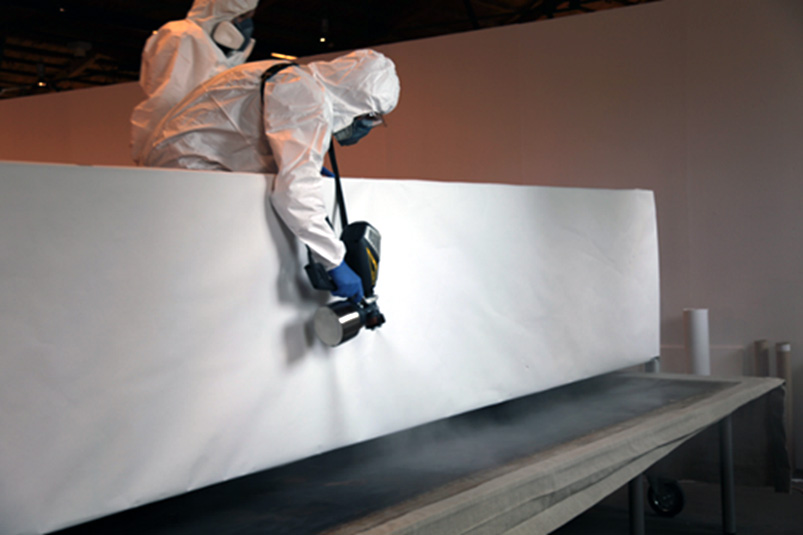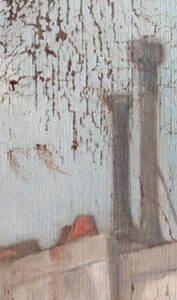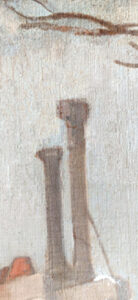After the maintenance work was completed, the painting surface was cleaned of any adhesive residues and the work was left to dry completely, the maintenance staff of EPMAS proceeded to varnish the work.
The varnishing of the project was carried out using the easy to use FinishControl 3500 paint spray system which is also suitable for FineFinish applications such as varnish. The paint spray system operates with XVLP (Extra Volume Low Pressure) technology, a spray technique based on HVLP (High Volume Low Pressure), but with a higher spray rate that creates a particularly fine spray pattern. Figure 1
Spraying was performed when the project was in a horizontal position. The special bridge that was constructed and could be moved over the project was used during the spraying. The varnish was deposited by spraying at an angle on the project.
For the varnishing of the project, liquid varnishes from Talens were used. Specifically, Talens Mat 003 and Talens Glossy 003 were used, which were mixed together and thinned with white spirit. Their ratio in order to obtain a semi-matte result was 2 parts Glossy, 1 part Mat and 1 part white spirit.
The preparation of the varnish, weighing and heating, were carried out in the gas extractor available in the maintenance laboratory of EPMAS. The maintenance workers taking appropriate protective measures during the varnishing process wore TYVEK 3M 4510 full-face protective suits, 3M 6200 double half-face masks with 3M 6200 organic vapour filters and 3M 6051 polyfilters. They also wore special gloves and special goggles to protect themselves from the varnish mist created in the area during the varnishing process.
After the first coat of varnish had dried, a second coat of varnish was applied to the project and allowed to dry in order to allow the project to be wrapped in its transport roller.
Aesthetic restoration
Part of the aesthetic restoration, mainly on the upper part of the project, was carried out (Figures, 2 and 3) using varnish (20ml restauro varnish tubes). The aesthetic restoration of the project will be implemented and completed in the Open Viewing Laboratory that has been set up in the permanent exhibition area of the project. The restorers of EPMAS, using the Platform built in the framework of “PROTEA”, will complete in situ the final phase of maintenance of the work, the aesthetic restoration, often in front of an audience. The final varnishing of the work will be done with Talens Retouching spray varnish and the use of the portable extractor.




